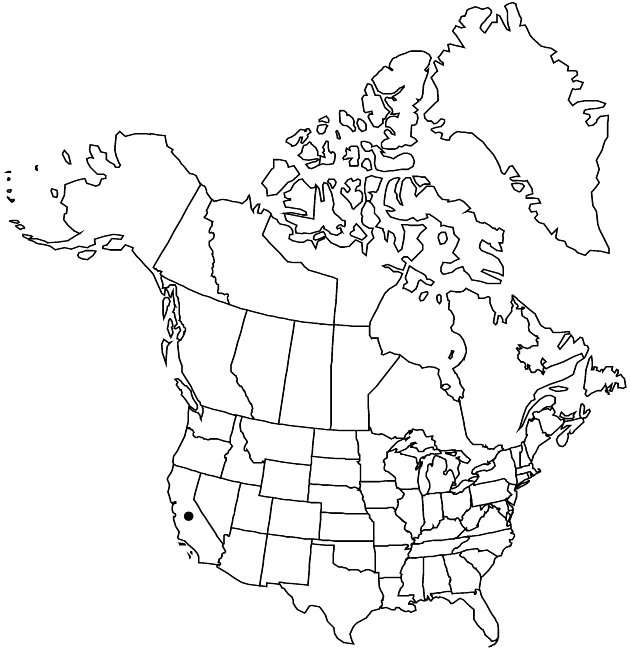Chaenactis carphoclinia var. peirsonii
Man. S. Calif. Bot. 601. 1935.
Common names: Peirson pincushion
EndemicConservation concern
Basionym: Chaenactis peirsonii Jepson Madroño 1: 259. 1929
Revision as of 21:31, 29 July 2020 by imported>Volume Importer
Plants mostly 40–60 cm. Leaves ± basal, longest 7–10 cm; petioles dilated proximally, ± indurate.
Phenology: Flowering Mar–Apr.
Habitat: Open, rocky or gravelly desert slopes and flats, shrublands
Elevation: 0–200 m
Discussion
Of conservation concern.
Variety peirsonii is known from the eastern Santa Rosa Mountains and adjacent Salton Sea area near the common border of Imperial, Riverside, and San Diego counties. Unlike var. attenuata, in which it has sometimes been included, var. peirsonii is geographically and morphologically well defined.
Selected References
None.
Lower Taxa
None.
"longest" is not a number."longest" is not a number.
... more about "Chaenactis carphoclinia var. peirsonii"
introrse +
connate +
reddish +
herbaceous +
terete;aristate;acuminate +
scarious +
absent +
hirsute +
papillate +
continuous +
decurrent +
elliptic +
lobed;ovate;oblanceolate;ovate;oblanceolate;linear;deltate +
winged;ribbed;winged;ribbed +
1;15 +
distal +
stigmatic +
6;80 +
absent +
Peirson pincushion +
actinomorphic +
equal +
monomorphic +
dimorphic +
terete +
3mm;4.5mm +
staminate +
Calif. +
straight +
scabrous +
scabrellous +
distinct +
proximal +
1;5 +
bisexual +
dispersed +
singly +
discoid +
indeterminate +
surrounding +
obconic;more or less cylindric or hemispheric +
succulent +
petiolate +
alternate +
basal +
2-carpellate +
inferior +
attached +
anatropous +
3;10 +
persistent +
fragile +
longest +
falling +
absent +
coroniform +
tough +
thick +
absent +
connate +
dilated +
indurate +
persistent +
distinct +
falling +
unequal +
Man. S. Calif. Bot. +
1935 +
pistillate +
absent +
fertile +
epaleate +
pitted +
knobby;convex;more or less flat +
fibrous +
distinct +
exalbuminous +
modifed +
absent +
alternate +
branched +
erect +
2-branched +
papillate +
Chaenactis carphoclinia var. peirsonii +
Chaenactis carphoclinia +
variety +
cylindric +
shorter +
longer +
antrorse +
terete +
annual +
